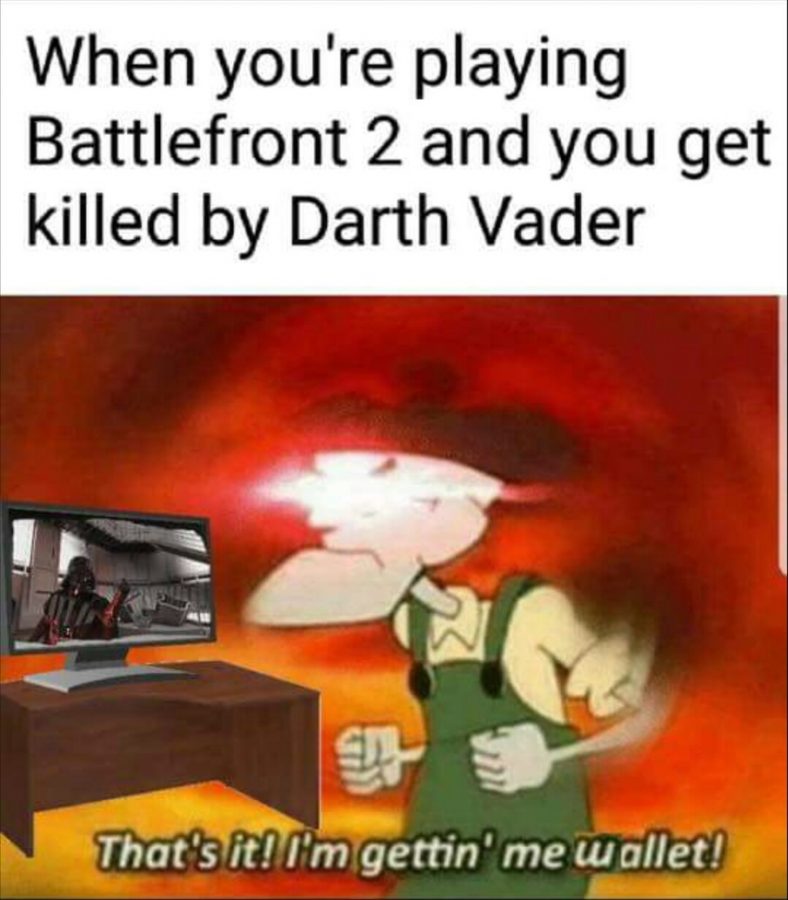The “Gigantic” Problem With “Micro” transactions
The Big Problem We All Try to Overlook
Microtransactions. The mere mentioning of that word brings many gamers to explode in fits of rage, and by many accounts, they have every right to. This is a business model where users can purchase virtual goods via “small” micropayments that can range anywhere from $0.99- $99. Video game companies have been abusing the power of microtransactions for years, and it seems that it is only getting worse. Many people believe that we should go back to the way games used to be made. A time where games were made, sold, played and were done with, but is that really how video games should evolve? Maybe instead of getting rid of microtransactions completely, we should try to find a way to make them better.
Ask any person who plays video games on a daily basis about microtransactions and chances are they are going to mention EA. EA (Electronic Arts) is an American video game company that publishes many popular titles, such as: FIFA Football, Battlefield, Dante’s Inferno and many other titles. One game in particular, Star Wars Battlefront II, has gotten EA in a lot of trouble recently. The main bulk of this controversy involves EA locking content from the game by forcing players to play up to forty hours in order to unlock some characters; enticing players to skip hours of grinding by spending money to unlock them instead. (For more information about the Battlefront scandal please follow the link provided below.) https://www.theverge.com/2018/4/13/17230874/ea-star-wars-battlefront-2-loot-box-patrick-soderlund-interview
Although EA is well known in the gaming community for being a fan of loot boxes and microtransactions, they are not the only ones doing this. Almost every modern game nowadays (especially multiplayer games) has some sort of DLC (Downloadable Content) that you can buy; some companies just handle microtransactions better than others.
One of the ways developers handle DLC is by selling cosmetic items such as new costumes for your character to wear or different types of paint jobs to put on your weapons, vehicles, etc. This type of DLC has no bearing on how someone plays the game. It does not make them better at the game, and it does not make it harder for the enemies; it is strictly for the players enjoyment. If they do not want to pay for it, they do not have to. the experience will still be the same. This type of microtransaction allows players (who enjoy a game) a chance to express themselves without having to spend too much money.
Another popular form of DLC in modern games involves character packs, which allows the gamer to purchase new characters to play as. These are especially common for fighting games which allow the player to add different, more varied characters to their roster. At first glance, this seems a bit strange and off-putting. Why not put all of the characters in the game at once and be done with it? The truth is, this method of DLC is actually both beneficial to the players and the game developers.
Take the arcade classic Street Fighter II: The World Warrior for example. After its massive success in 1991, Capcom decided to make a new installment. However, there was nothing really wrong with the current game to fix or change, and it would be expensive to create a whole new game from the ground up. So, rather than make a brand new sequel Capcom decided to make a new “version” of it instead titled, Street Fighter II: Champion Edition. This version was pretty much the exact same game, but they added four new playable characters to choose from. This also became a smash hit, so Capcom repeated the process again and again; coming out with a total of five different versions of Street Fighter II almost every year, and each version was just slightly better than the last.
Nowadays, companies don’t have to resort to making a brand new game just to add a few little quality of life touches. They can just sell new characters as DLC (which are usually sold around $4 per character) and patch out any bugs that they find via updates, which in turn benefits the player and makes things a lot easier for the developers.
Most see microtransactions as evil monsters that ruin every game they touch, but that’s simply not true. Games nowadays tend to run on servers and need constant maintenance to run at peak performance, and although this may not apply for all companies, (especially AAA developers) microtransactions are a great way for small game developers to maintain maintenance for their games. Some microtransactions can even add whole new levels and missions for players to enjoy; adding hours of content to their games.
Yes, microtransactions have left a huge stain in the gaming community, and looking back, games from our past that didn’t have any microtransactions or DLC in them are a great reminder that we don’t have to spend money after we have already bought the game to enjoy it. But ignoring microtransactions and wishing that they would go away isn’t going to solve anything. Microtransactions are here to stay, we can’t help that, but instead of putting our fingers in our ears and trying to ignore the problem, we should accept them and try to find a way to fix their problems; because even though they may be a nuisance today, microtransactions are the future of gaming.

Claude “Trey” Wright is a senior from Vicksburg, Miss., who is presently studying creative writing. Trey’s interests include drawing comics, reading...



